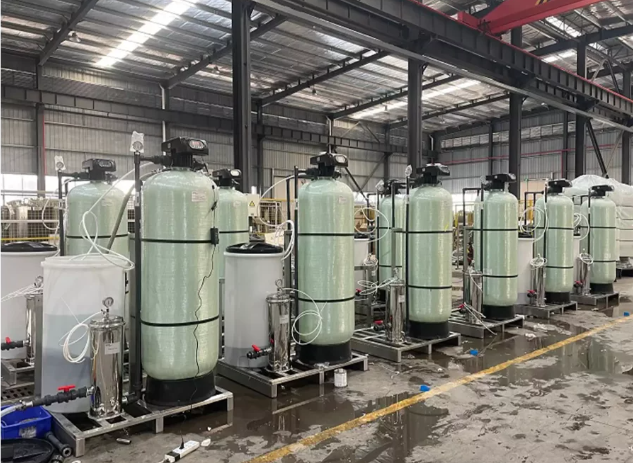Hard water—rich in calcium and magnesium minerals—causes frustrating issues: limescale on faucets, stiff laundry, and reduced efficiency of water heaters. A hard water to soft water converter (often called a water softener) solves these problems by removing or neutralizing mineral ions. But how exactly does this device work? Let’s break down its core components, working principle, and key processes.
1. Key Components of a Hard Water to Soft Water Converter
Before understanding the mechanism, you need to know the converter’s main parts—each plays a critical role in softening water:
- Resin Tank: Filled with tiny, porous resin beads (usually made of polystyrene). These beads are coated with sodium ions, which are key to the softening process.
- Brine Tank: Holds a saltwater solution (brine). It recharges the resin beads when they lose their sodium ions.
- Control Valve: The “brain” of the converter. It regulates water flow, switches between softening and regeneration modes, and ensures consistent performance.
2. The Core Working Principle: Ion Exchange
Most residential and small-scale hard water converters use ion exchange—the most effective and widely used method. Here’s how it works in 3 simple steps:
Step 1: Hard Water Enters the Resin Tank
When hard water flows into the resin tank, it passes through the bed of sodium-coated resin beads. Calcium (Ca²⁺) and magnesium (Mg²⁺) ions in the hard water are attracted to the resin beads—their positive charge is stronger than the sodium ions (Na⁺) on the beads.
Step 2: Mineral Ions Swap with Sodium Ions
The calcium and magnesium ions “stick” to the resin beads, while the sodium ions are released into the water. This swap turns hard water into soft water: the harmful minerals are trapped, and the water now contains harmless sodium ions.
Step 3: Soft Water Flows to Your Taps
After the ion exchange, the softened water exits the resin tank through the control valve and travels to your home’s faucets, appliances, and laundry systems—free of minerals that cause limescale.
3. Regeneration: Recharging the Resin Beads
Over time, the resin beads become saturated with calcium and magnesium ions and can no longer soften water. This is when regeneration (recharging) happens—triggered automatically by the control valve (usually every 7–14 days, based on water usage). Here’s the process:
- Backwash: The control valve reverses water flow to flush out dirt and loose mineral particles from the resin tank.
- Brine Rinse: Brine from the brine tank is pumped into the resin tank. The high concentration of sodium ions in the brine forces the resin beads to release calcium and magnesium ions (which are washed away with the brine).
- Rinse: Clean water flushes any remaining brine and minerals from the resin tank.
- Refill: The brine tank refills with water to make new brine for the next regeneration cycle.
4. Do All Converters Use Ion Exchange?
While ion exchange is common for homes, some industrial or eco-friendly converters use other methods:
- Salt-Free Converters: They don’t remove minerals but neutralize them (e.g., using polyphosphates) to prevent limescale. They’re ideal for those avoiding sodium but are less effective for heavy hard water.
- Reverse Osmosis (RO): RO systems filter out minerals through a semipermeable membrane. They’re often used in combination with ion exchange for ultra-soft water. For industrial needs, Molewater’s Industrial Water Softener is a reliable choice.
Final Thoughts
A hard water to soft water converter simplifies daily life by solving hard water problems—all thanks to the reliable ion exchange process and automated regeneration cycle. For industrial operations, choosing a durable converter protects equipment and cuts costs long-term.

